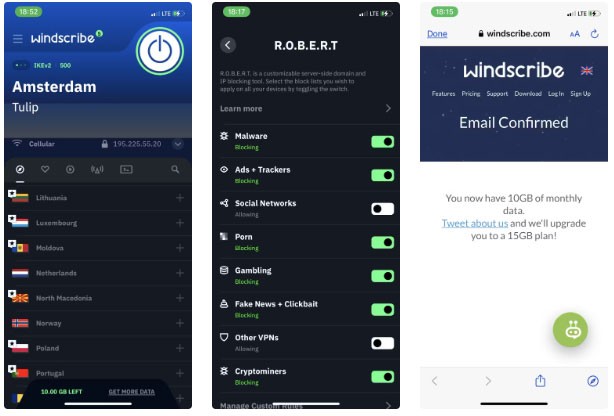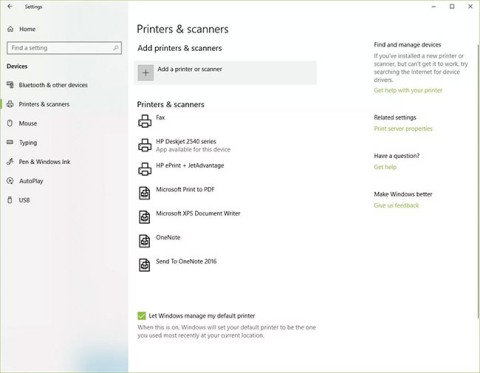The most commonly deficient nutrients in the diet

Diet is important to our health. Yet most of our meals are lacking in these six important nutrients.
Major data breaches that potentially expose your data to bad guys have become a daily occurrence. The easiest way to protect yourself, even if your password is compromised, is to use two-factor authentication — but not all multi-factor authentication methods are created equal.
3 Best MFA Methods
Just because MFA provides an extra layer of security doesn't mean that cybercriminals can't bypass MFA and access your data. However, if you're using one of these methods, the chances of them cracking the code are very low.
Physical security key
Imagine being able to access your computer the way you access your house - with just a key. A physical security key is a physical key that, when inserted into a USB port , gives you access to your computer. However, the biggest drawback to using a physical security key is that it becomes quite difficult to access your device if you lose it.
It is important to note that there are two types of security keys: Bluetooth and USB. While both are extremely secure, physical security keys with Bluetooth capabilities are vulnerable to attacks where the password sent over Bluetooth is stolen. Such an attack is not possible when using a USB security key.
Biometric authentication

What if instead of carrying a key in your pocket, you were the key? Biometric authentication involves using a part of your body to authenticate. Common biometric methods include using a person's face, fingerprint, voice, handwriting, and vein patterns.
Biometric authentication has become increasingly popular in recent years since Apple introduced Touch ID in 2013 (Android devices also received fingerprint biometrics in 2014, with Android 4.4). Many people have started using biometrics for authentication because it is easy to use and extremely secure. Unlike physical keys that can be lost or stolen, you never forget your finger in a restaurant, right?
One-time password (authenticator app)
A one-time password (OTP) is a unique, one-time password that must be used within a certain time frame before it expires. There are many ways to receive an OTP, but the most secure is through an authenticator app like Google Authenticator .
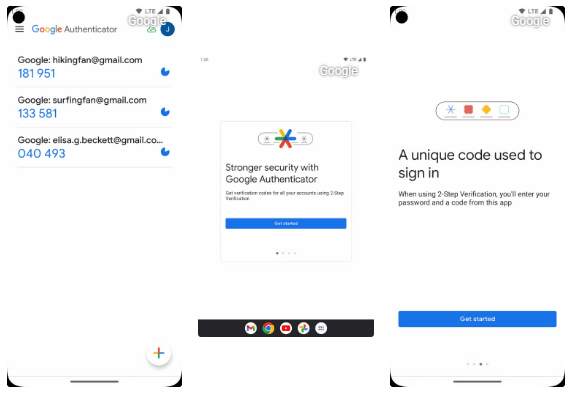
With Google Authenticator, you have up to 60 seconds to enter an OTP before generating a new one. Not all OTP methods are equally secure. OTPs sent via SMS and email are not as secure.
Other MFA methods
Using any MFA method is better than using none at all. However, some methods are better than others. Here are the best of the best.
Push Notifications
In addition to letting you know you’ve received a new IG message or promotional offer, push notifications can also be used for security purposes. When enabled, push notifications are sent through the app of your choice and must be approved or declined. The beauty of push notifications is that they don’t require character input in the same way that, say, an authentication app does.
Push notifications are user-friendly, providing strong and fast security. The main weakness is that if your device is lost or stolen, the thief only needs access to your unlocked phone to authenticate with push notifications.
Phone
Let’s say you’ve logged into your bank account but have enabled 2FA via phone call. Once you enter the correct username and password, you’ll receive a phone call to the number on file and be given a second password. This method is secure enough if you have access to your phone, but phones can easily be stolen or lost. Not to mention that most phone calls are unencrypted. If a skilled hacker targets you, they can eavesdrop on your calls. Having just been sent an unencrypted password, they can easily steal your password and access your account.
One-time password (SMS or Email)
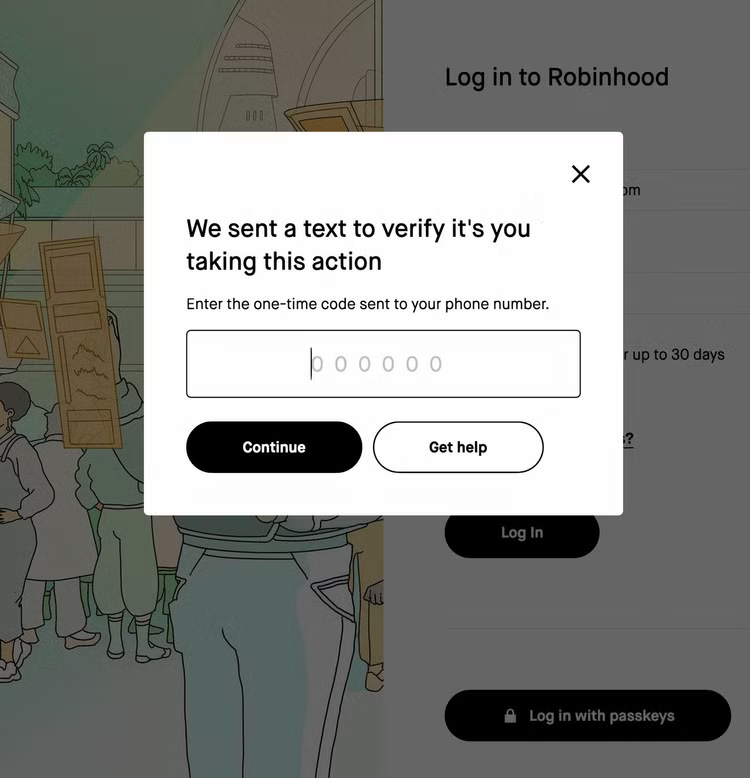
OTPs sent via SMS or email are not inherently insecure; however, they are among the least secure ways to authenticate users. SMS and email OTPs are appealing because they are both simple and easy to implement. Less tech-savvy users may not want to set up an authenticator app, may not know how (or want to) enable biometric authentication, or may not even know what a physical security key is.
The problem is that SMS and even email can be compromised. 2FA is of little use if the second password is sent to a cybercriminal. SMS messages can also be sent unencrypted and intercepted.
Security question
We've all filled out security questions. Common security questions ask for your mother's maiden name, your pet's name, and where you were born.
The problem with these questions is that anyone who views your Facebook account can find out this information. Another big problem is that these answers can be forgotten. Passwords and usernames are often recorded, whether in a password manager or elsewhere; however, the answers to security questions are not. If you forget the answers, cybercriminals won’t be able to access your account, but neither will you.
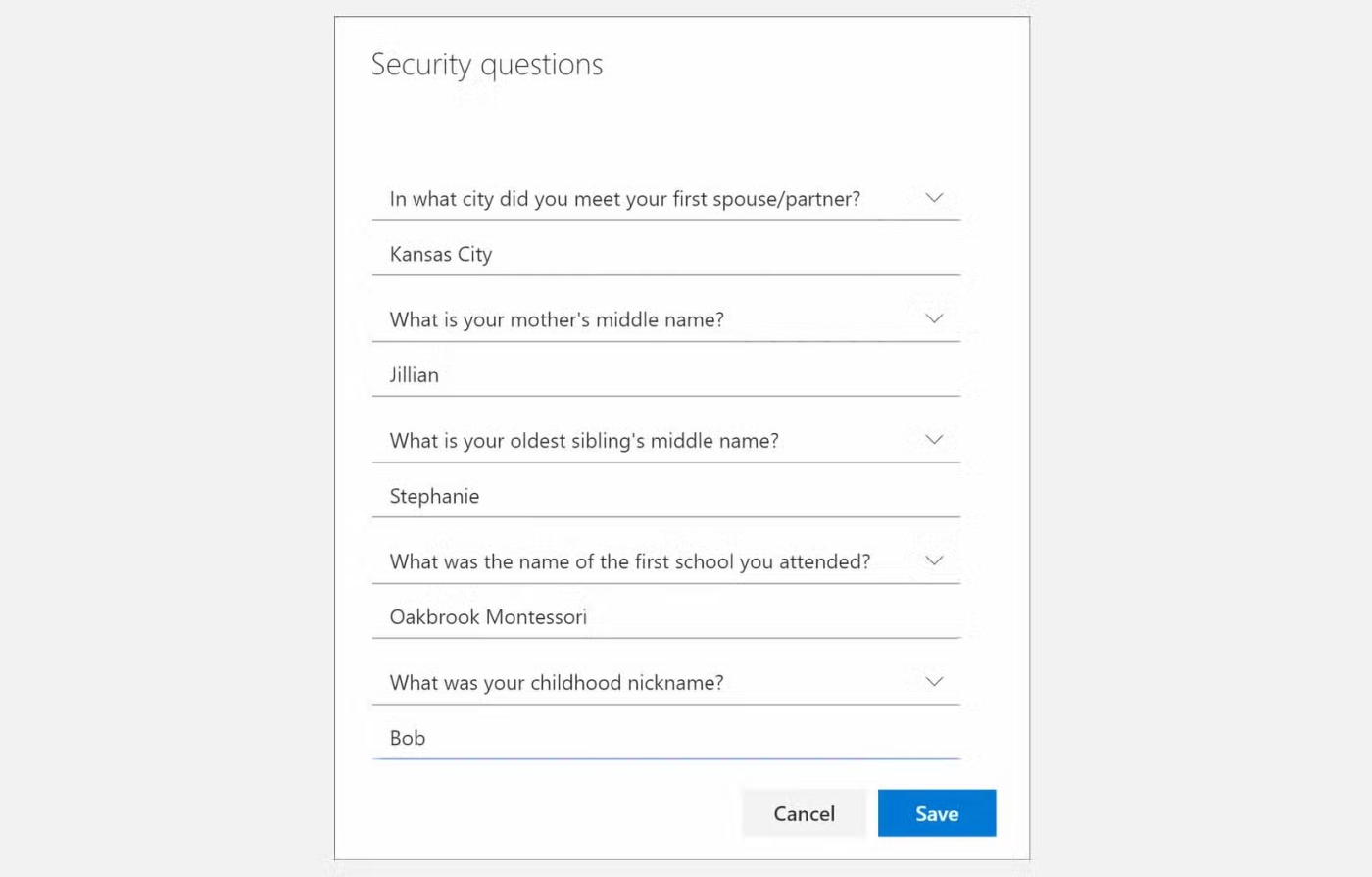
You have a variety of multi-factor authentication methods to choose from. Now that you know which method is most secure, you can make a more informed decision about how to best protect your data. Regardless of which method you choose, remember that any 2FA is better than none at all.
Diet is important to our health. Yet most of our meals are lacking in these six important nutrients.
At first glance, AirPods look just like any other true wireless earbuds. But that all changed when a few little-known features were discovered.
In this article, we will guide you how to regain access to your hard drive when it fails. Let's follow along!
Dental floss is a common tool for cleaning teeth, however, not everyone knows how to use it properly. Below are instructions on how to use dental floss to clean teeth effectively.
Building muscle takes time and the right training, but its something anyone can do. Heres how to build muscle, according to experts.
In addition to regular exercise and not smoking, diet is one of the best ways to protect your heart. Here are the best diets for heart health.
The third trimester is often the most difficult time to sleep during pregnancy. Here are some ways to treat insomnia in the third trimester.
There are many ways to lose weight without changing anything in your diet. Here are some scientifically proven automatic weight loss or calorie-burning methods that anyone can use.
Apple has introduced iOS 26 – a major update with a brand new frosted glass design, smarter experiences, and improvements to familiar apps.
Yoga can provide many health benefits, including better sleep. Because yoga can be relaxing and restorative, its a great way to beat insomnia after a busy day.
The flower of the other shore is a unique flower, carrying many unique meanings. So what is the flower of the other shore, is the flower of the other shore real, what is the meaning and legend of the flower of the other shore?
Craving for snacks but afraid of gaining weight? Dont worry, lets explore together many types of weight loss snacks that are high in fiber, low in calories without making you try to starve yourself.
Prioritizing a consistent sleep schedule and evening routine can help improve the quality of your sleep. Heres what you need to know to stop tossing and turning at night.
Adding a printer to Windows 10 is simple, although the process for wired devices will be different than for wireless devices.
You want to have a beautiful, shiny, healthy nail quickly. The simple tips for beautiful nails below will be useful for you.
